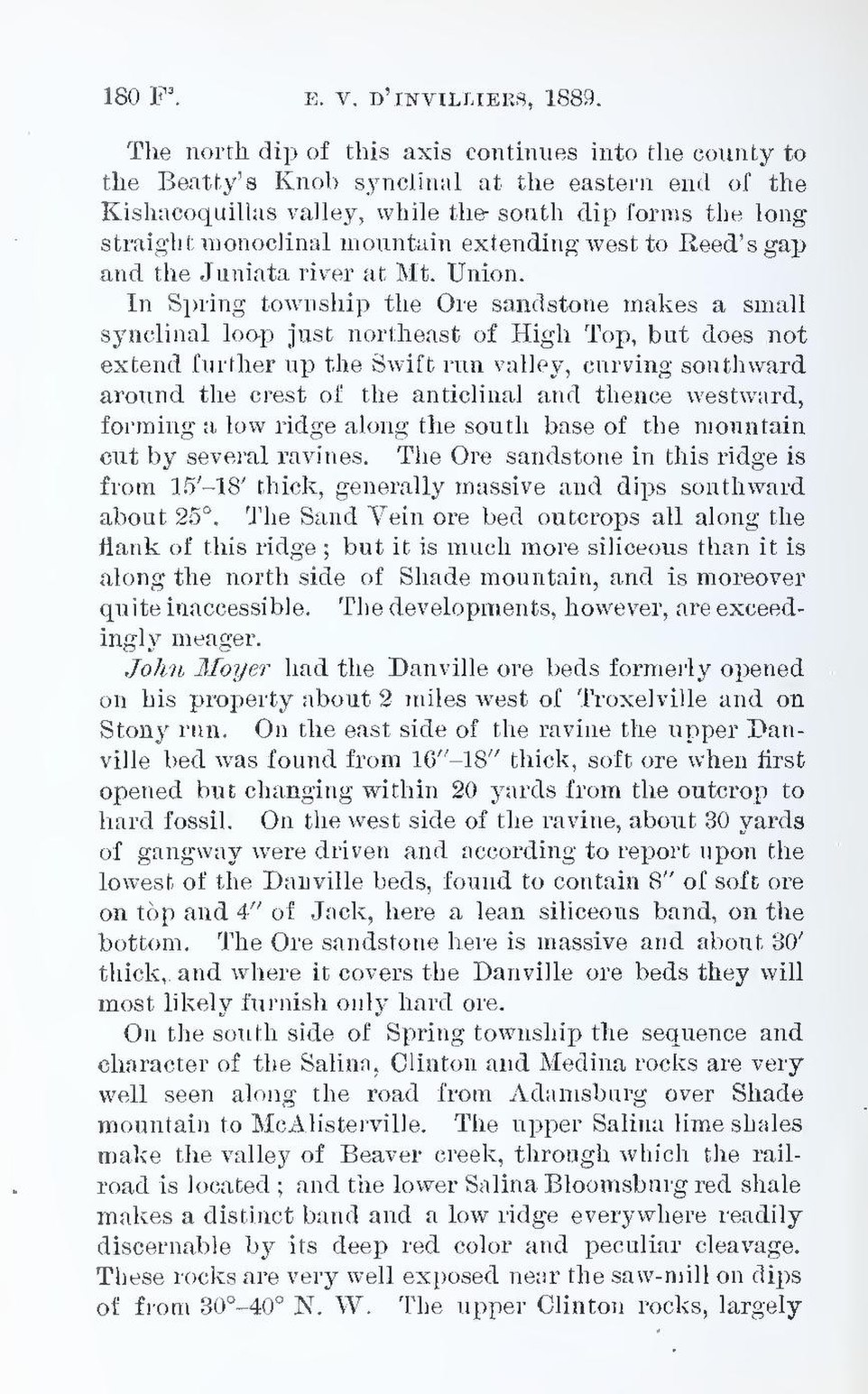The north dip of this axis continues into the county to the Beatty’s Knob synclinal at the eastern end of the Kishacoquillas valley, while the south dip forms the long straight monoclinal mountain extending west to Reed’s gap and the Juniata river at Mt. Union.
In Spring township the Ore sandstone makes a small synclinal loop just northeast of High Top, but does not extend further up the Swift run valley, curving southward around the crest of the anticlinal and thence westward, forming a low ridge along the south base of the mountain cut by several ravines. The Ore sandstone in this ridge is from 15′–18′ thick, generally massive and dips southward about 25°. The Sand Vein ore bed outcrops all along the flank of this ridge; but it is much more siliceous than it is along the north side of Shade mountain, and is moreover quite inaccessible. The developments, however, are exceedingly meager.
John Moyer had the Danville ore beds formerly opened on his property about 2 miles west of Troxelville and on Stony run. On the east side of the ravine the upper Danville bed was found from 16″–18″ thick, soft ore when first opened but changing within 20 yards from the outcrop to hard fossil. On the west side of the ravine, about 30 yards of gangway were driven and according to report upon the lowest of the Danville beds, found to contain 8″ of soft ore on top and 4″ of Jack, here a lean siliceous band, on the bottom. The Ore sandstone here is massive and about 30′ thick, and where it covers the Danville ore beds they will most likely furnish only hard ore.
On the south side of Spring township the sequence and character of the Salina, Clinton and Medina rocks are very well seen along the road from Adamsburg over Shade mountain to McAlisterville. The upper Salina lime shales make the valley of Beaver creek, through which the railroad is located; and the lower Salina Bloomsburg red shale makes a distinct band and a low ridge everywhere readily discernable by its deep red color and peculiar cleavage. These rocks are very well exposed near the saw-mill on dips of from 30°–40° N. W. The upper Clinton rocks, largely
